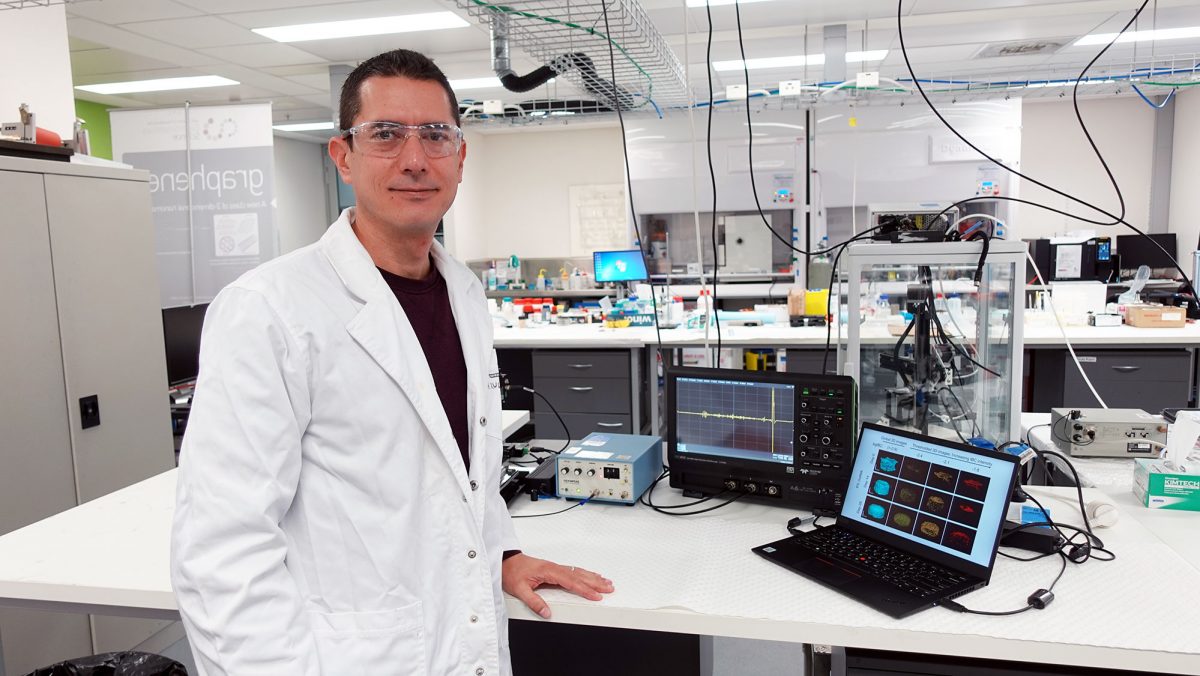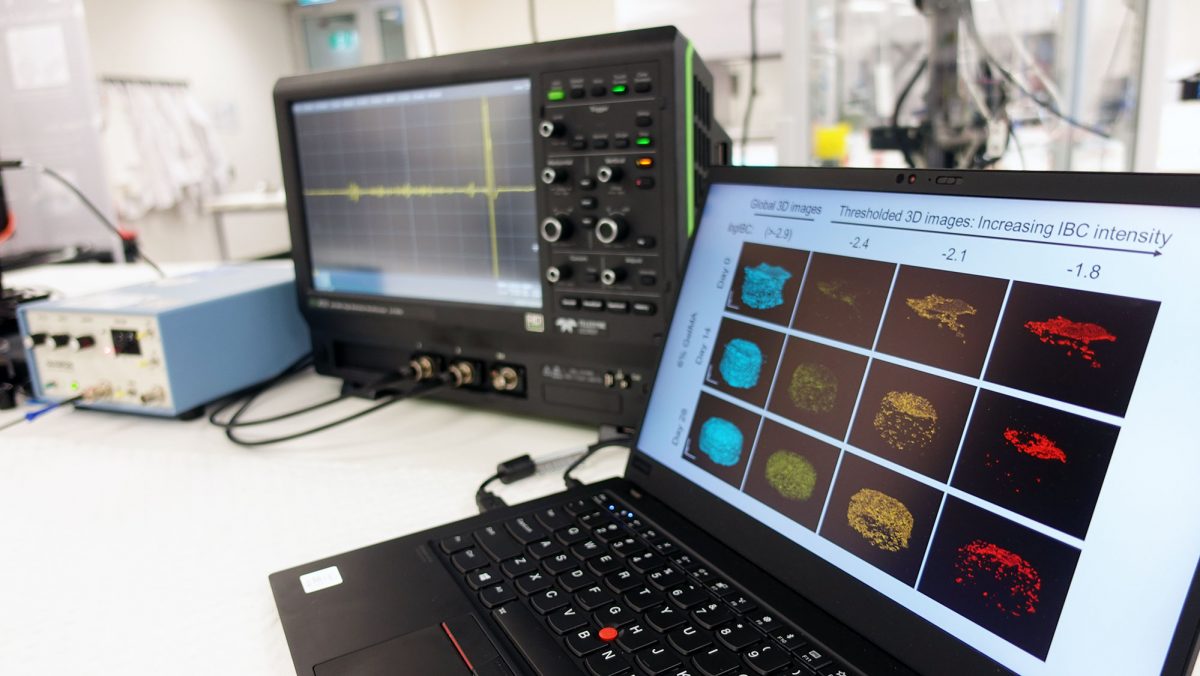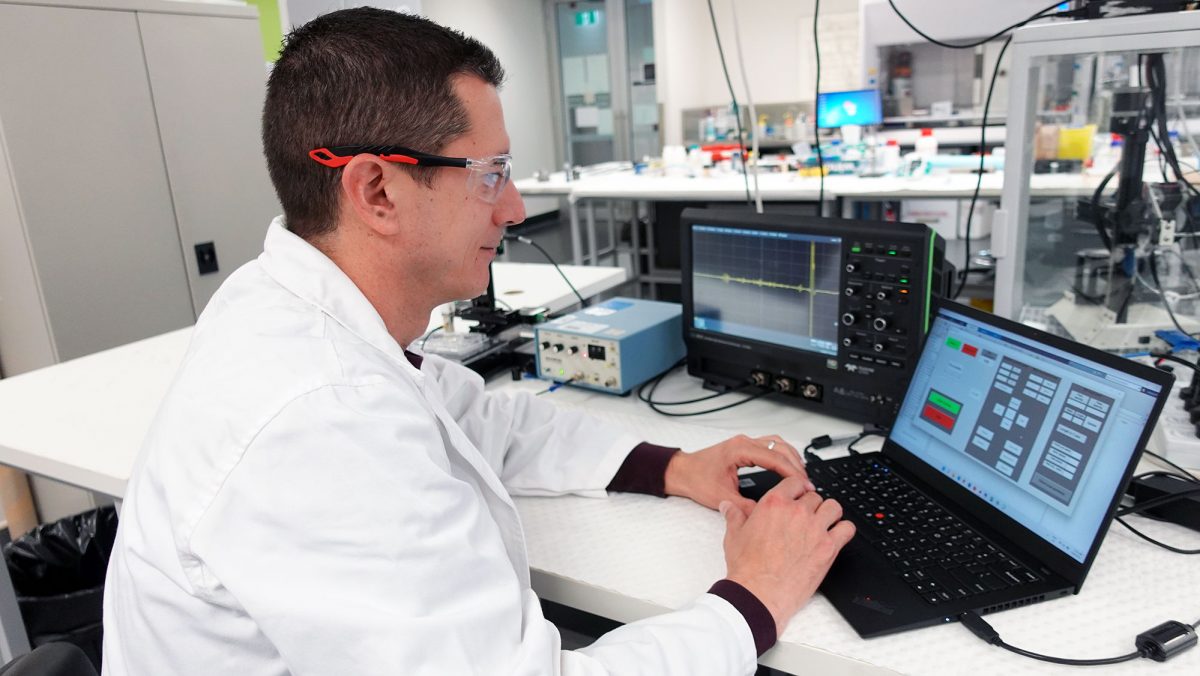News
3D printing bone tissue
Jun 28 2022
Researchers from the University of Wollongong’s (UOW) Intelligent Polymer Research Institute (IPRI) continue to tackle the challenges that must be confronted if advances in tissue engineering and biofabrication are to be deployed in a clinical setting.

The recent paper, ‘Standardised quantitative ultrasound imaging (SQUI) approach for the non-destructive three-dimensional imaging and quantification of cartilage formation in hydrogel based bioscaffolds’ published in Acta Biomaterialia, highlights some of the progress being made at IPRI.
UOW researchers Dr Andres Ruland and Prof Gordon Wallace, in collaboration with clinical collaborators at the Aikenhead Medical Discovery Centre (ACMD) in Melbourne, have published details on an innovative approach that employs ultrasound for the non-destructive quantification and visualisation of cartilage formation in tissue engineered bioscaffolds.
This work represents a significant achievement in the area of imaging technologies for tissue engineering and regenerative medicine, an approach that enables the quantitative characterisation of the constructs without damage.

“These methods are needed as an alternative to conventional imaging approaches that are destructive in character,” said Dr Ruland.
“In this work, we demonstrate that the use of ultrasound imaging together with advanced signal processing approaches enables generation of high quality 3D images to allow visualisation and quantification of cartilage formation.”
The IPRI team recognised this technological gap a number of years ago, realising the future of 3D bioprinting is dependent on the ability to examine structures made yet not destroy them.
“To address this challenge, we identified ultrasound as a suitable technology for the non-destructive interrogation of biomaterials. However, little was known about the full potential of ultrasound for the evaluation of tissue engineered constructs – and this represented an opportunity to contribute to this important area of research,” Dr Ruland continued.

“We now have an advanced, robust, and versatile methodology for the evaluation of bioscaffolds in their full dimension. With this publication we also show that we are able to perform this type of study on natural cartilage tissue.”
“This work was carried out under the ARC Centre of Excellence for Electromaterials Science (ACES) umbrella. This longer term funding and interdisciplinary research environment has enabled us to embrace challenges like this that require a fundamental shift in thinking,” said Prof Wallace.
“These breakthroughs require committed, innovative and, dare I say, brave researchers willing to go out on a limb to walk the tight rope of interdisciplinary research to ensure progress. Andres Ruland is one of those individuals.”
Access the full paper and research here.













